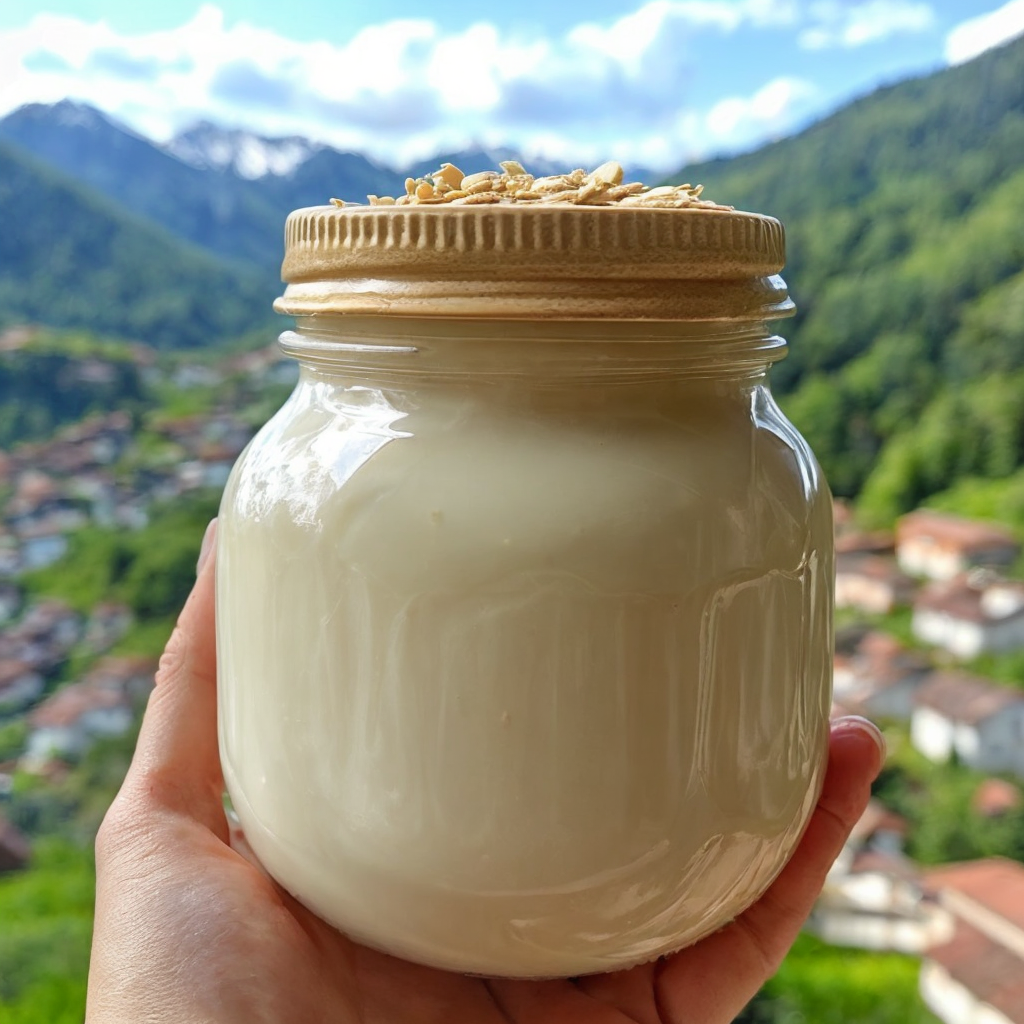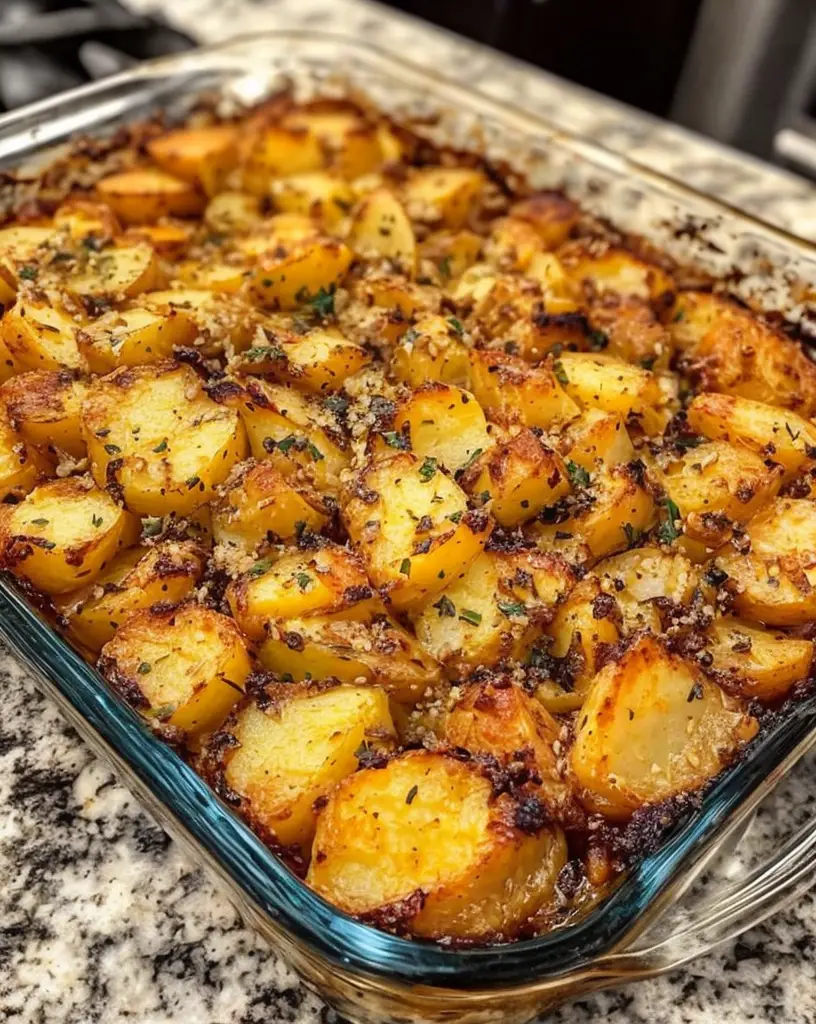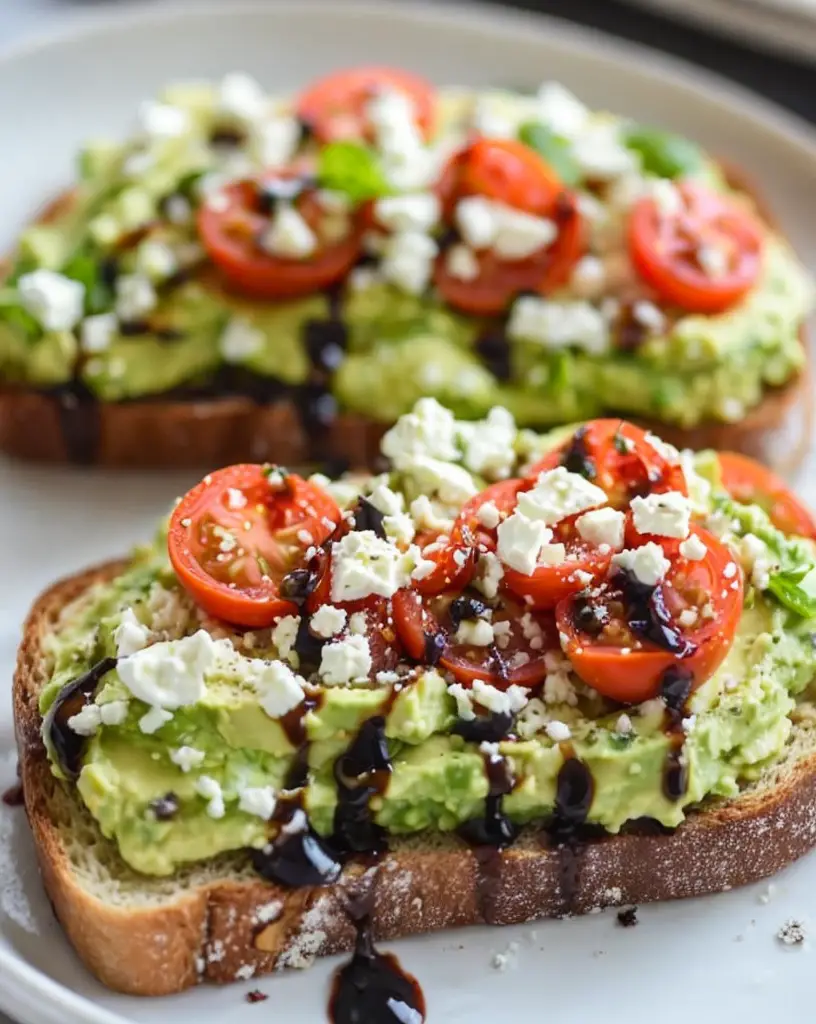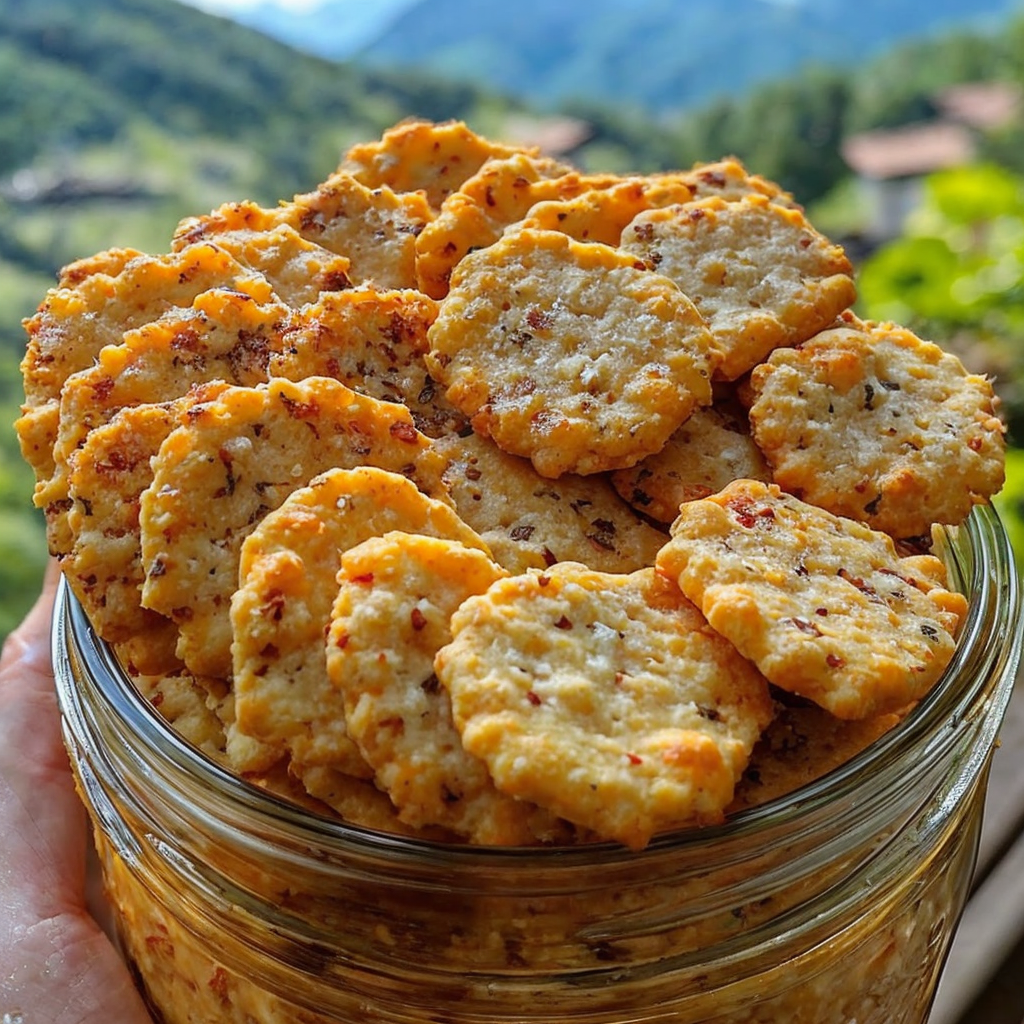Baked Cream Cheese French Toast Casserole: Breakfast Bliss in Every Bite
The Baked Cream Cheese French Toast Casserole is a delightful fusion of creamy, custardy goodness with the warm, inviting flavors of classic French toast. Perfect for brunch or a special breakfast treat, this casserole captures the essence of a comforting breakfast without requiring the meticulous care of traditional French toast preparation. With its layers of rich cream cheese paired with a sweet egg custard, every bite is an indulgent experience, rich in flavor and texture.
Imagine waking up to the irresistible aroma of vanilla and cinnamon wafting through your kitchen, inviting family and friends to the breakfast table. The golden edges of the baked casserole, dotted with luscious cream cheese swirls, beckon you to dive in. This recipe not only satisfies your sweet tooth but also brings the warmth of homemade cooking to your mornings.
Quick Recipe Highlights
- Flavor Profile: The blend of creamy, tangy cream cheese with hints of vanilla and cinnamon creates a delightful sweet-salty balance that’s utterly irresistible.
- Texture: Enjoy the comforting softness of baked bread intertwined with the smoothness of cream cheese, offering a delightful contrast to the delightful crispy top.
- Aroma: The sweet, warm scents of cinnamon and vanilla envelop you as the casserole bakes, creating a nostalgic and inviting atmosphere.
- Visual Appeal: The casserole’s inviting golden-brown top, sprinkled with powdered sugar, presents beautifully and is perfect for serving to guests.
- Skill Level Needed: This recipe is beginner-friendly, requiring only basic baking skills and minimal equipment, making it accessible for everyone.
- Special Equipment: A 9×13 baking dish, mixing bowls, a whisk, and measuring cups are all you’ll need to bring this delicious dish to life.
Recipe Overview
- Difficulty Level: This dish is easy to prepare, making it perfect even for novice cooks. It’s a straightforward assembly process which makes it fun to make.
- Category: This casserole falls under breakfast or brunch, making it a versatile choice for any morning gathering.
- Cuisine: While primarily American, the French influence is evident in its approach to custard-like dishes, celebrating rich flavors and textures.
- Cost: Relatively inexpensive, this recipe uses basic ingredients like bread, eggs, and cream cheese, making it budget-friendly.
- Season: This casserole is perfect for all seasons, but it shines during holidays or cozy winter mornings, adding warmth to the table.
- Occasion: Ideal for family breakfasts, holiday gatherings, or brunch parties, this dish is sure to impress your guests.
Why You’ll Love This Recipe
The taste and texture of the Baked Cream Cheese French Toast Casserole are simply irresistible. The smooth cream cheese melds beautifully with the sweet custard created from the eggs and milk, resulting in a rich dish that offers comfort with every bite. Topped with a light dusting of powdered sugar and perhaps some fresh berries, it becomes a feast for both the eyes and the palate. This combination is perfect for those who appreciate both sweet and savory flavors mingling together.
Convenience is another fantastic feature of this casserole. With a short prep time and the ability to prepare it the night before, it saves you time in the morning rush. Just pop it in the oven and enjoy more moments with your loved ones as the enticing aroma fills your home. The minimal need for hands-on cooking makes it a beloved dish for busy families and entertaining hosts alike.
In terms of nutritional advantages, this casserole packs a satisfying punch. While it has its share of indulgence, you can easily introduce healthier substitutions for bread and dairy to make it lighter. Using whole grain bread and low-fat cream cheese can elevate its nutritional profile without sacrificing taste, making this an excellent choice for families who want to enjoy delicious meals without the guilt.
Socially, this dish shines during gatherings. It’s easy to prepare in larger portions, making it an inviting centerpiece for brunch tables. Friends and family will rally around the dish, enjoying its flavors and sharing stories, making it a dish that creates lasting memories. The shared experience of enjoying this casserole makes it more than just food; it’s an opportunity to connect and celebrate.
Cost-effectiveness is another compelling reason to love this recipe. Using basic and readily available ingredients means it won’t break the bank. This makes it a go-to choice for large family breakfasts or meal prepping for the week. You enjoy complete satisfaction without a hefty price tag, allowing for plenty of variations and personal twists without straining your budget.
Historical Background and Cultural Significance
The origin of French toast can be traced back to ancient times, with its roots interwoven throughout various cultures. The idea of soaking bread in a custard mixture is a practice that has transcended generations, serving as a means to repurpose stale bread. The French toast casserole, however, is a modern twist that allows for easier serving and a delightful way to enjoy flavors reminiscent of classic French toast.
Culturally, the dish signifies comfort and home, often bringing families together during breakfast routines. It’s a delicious way to cherish traditions while adapting to contemporary dining preferences, highlighting how recipes evolve with modern lifestyles while maintaining their core essence. The casserole form speaks to a communal experience, making it suitable for gatherings and celebrations.
Over the years, baked variations of French toast have gained popularity, becoming staples in brunch menus across America. This evolution showcases a creative approach to classic recipes, allowing cooks of all skill levels to experiment with flavors and presentations. Regional adaptations also introduce unique flair, with different toppings and ingredients reflecting local tastes and preferences.
Throughout the years, variations of this versatile recipe have emerged, catering to different dietary needs and preferences. From aromatic spices to varied fruits, the baked French toast casserole symbolizes culinary creativity and resourcefulness. It reflects the spirit of sharing and hospitality that is paramount in the culinary world, showcasing the ability of food to weave people together.
Ingredient Deep Dive
Bread: Bread serves as the backbone of any French toast casserole, offering both structure and taste. Brioche or challah are traditional choices, celebrated for their richness, allowing the custard to soak deeply. Whole grain breads offer a wholesome twist, packing in additional nutrients and fiber, appealing to health-conscious cooks seeking comfort without compromise.
When selecting bread, freshness is key; look for loaves that are slightly stale to help absorb the custard without becoming soggy. For storage, keep bread in a cool, dry place, ideally in a paper bag for a day or two. For longer storage, freezing slices is an excellent option, helping to maintain quality and extending shelf life. Substitutions for gluten-free or low-carb diets can easily be achieved using gluten-free bread or almond flour bread.
Cream Cheese: Cream cheese adds a rich, tangy flavor that elevates the overall dish. Originating from the U.S. in the late 19th century, its creamy texture and mild taste make it a versatile ingredient for both sweet and savory dishes. Nutritionally, cream cheese is a good source of fat, contributing to its rich mouthfeel, yet can be substituted with lower-fat or dairy-free options for a healthier version.
When selecting cream cheese, opt for blocks rather than spreadable varieties for better texture when baking. For storage, keep it refrigerated and always check for any discoloration or off-smells to avoid spoilage. For substitutions, consider ricotta or mascarpone cheese for a different yet delightful twist, ensuring the overall balance of flavors remains enticing.
Common Mistakes to Avoid
- Not letting the casserole sit: Allowing the casserole to rest before baking is crucial for proper absorption of the custard, preventing a soggy texture.
- Using fresh bread: Fresh bread does not absorb custard effectively. Opt for slightly stale bread or leave it out overnight.
- Skipping the cream cheese swirl: Don’t skip the cream cheese layer; it adds a delightful texture and flavor contrast that is integral to the dish.
- Overmixing the custard: Mix too vigorously and you risk breaking the eggs, creating a grainy custard.
- Not seasoning enough: Ensure you season the custard well; cinnamon, nutmeg, and vanilla bring out the sweetness and aroma.
- Serving too hot: Let the casserole cool slightly before serving; it allows the flavors to settle, improving the experience.
- Overbaking: Keep an eye on baking time; overbaking dries out the casserole and diminishes its creamy texture.
- Ignoring portion sizes: Large portions can be filling; consider your guests’ preferences to avoid leftovers.
- Not customizing toppings: Feel free to play with toppings like fresh fruits or syrups; a little creativity can elevate the dish further.
- Forgetting prep work: Ensure all ingredients are ready before you begin; a smooth preparation process helps in easy assembly.
Essential Techniques
Custard preparation: Crafting the perfect custard is essential for achieving that classic French toast flavor. Combine eggs, milk, and spices in a bowl, whisking until smooth. The key is to thoroughly beat the eggs to prevent any clumping, ensuring a silky consistency that envelops the bread evenly.
Baking: Baking the casserole at the right temperature is crucial for even cooking. Preheat your oven adequately and bake until the top is golden brown. An unreliable oven thermometer can lead to inconsistent cooking; investing in a good one ensures perfect results every time.
Pro Tips for Perfect Baked Cream Cheese French Toast Casserole
1. For added flavor, consider incorporating different spices like cardamom or ginger into the custard mixture to give it a unique twist.
2. Assemble the casserole the night before and store it in the fridge, allowing the flavors to meld and the bread to soak thoroughly before baking.
3. Serve with a variety of toppings such as maple syrup, fresh berries, or whipped cream to elevate the dish at brunch gatherings.
4. Add a splash of orange or lemon zest to the batter for a delightful hint of citrus that complements the sweetness.
5. Experiment with flavored cream cheeses, such as strawberry or herb-infused, to surprise your guests with unique flavors.
6. For a crunchy topping, add a layer of granola or crushed nuts before baking for added texture.
7. Consider using mini bread rolls or croissants for a twist on the classic, offering a delicate yet scrumptious alternative.
8. Ensure even cooking by rotating the casserole halfway through the baking process, so it bakes evenly on all sides.
Variations and Adaptations
This recipe offers a wealth of opportunities for variations and adaptations. You can customize toppings based on the season, such as fresh peaches and cream in the summer or warm spiced apples in the fall. Each modification introduces delightful new flavors and captures the spirit of seasonal eating.
Dietary modifications can also be easily implemented; for example, gluten-free bread can replace traditional bread, making this casserole accessible to those with gluten sensitivities. Vegan options also play a role—substituting eggs with flaxseed meal or using plant-based cream cheeses creates a delightful dish that caters to vegan diets.
Flavor variations can be as simple as adding chocolate chips or chopped nuts into the custard for an extra textural pop. Alternatively, consider savory adaptations with herbs and spices for an unexpected yet charming breakfast option. The versatility of this dish means that creativity can lead you to endless explorations while maintaining the comforting essence of baked French toast.
Presentation alternatives include serving individual portions baked in ramekins or adapting the presentation for a festive brunch table, adding appealing garnishes that enhance visual enjoyment. Seasonal flavors and décor offer a chance to transform this classic dish into something extraordinary.
Serving and Presentation Guide
Plating the Baked Cream Cheese French Toast Casserole is as simple as it is delightful. Use a large spatula to serve generous portions onto each plate. To elevate the dish, add a sprinkle of powdered sugar on top and place a dollop of whipped cream or crème fraîche for an elegant touch.
Garnishing with fresh fruits such as berries or sliced bananas not only adds a pop of color but also enhances the experience with complementary flavors. Consider serving the casserole alongside a pitcher of warm maple syrup, allowing guests to ladle their desired amount over their servings.
Maintain ideal serving temperatures by allowing the casserole to cool slightly before serving to enhance flavors. Portion control can be effortlessly managed by cutting into squares or rectangles, ensuring everyone gets a satisfying yet manageable portion.
Modern serving suggestions might also include placing the casserole in individual bowls or ramekins, offering guests a personalized touch that is both charming and practical. Use colorful napkins or themed tableware to accent the dish, making breakfast feel festive and inviting.
Wine and Beverage Pairing
When it comes to wine pairings, a light, sparkling wine such as prosecco complements the Baked Cream Cheese French Toast Casserole beautifully. The effervescence balances the richness and sweetness of the dish, leading to a refreshing experience. Alternatively, a light, fruity rosé can bring a unique flavor dynamic that’s quite enjoyable.
For non-alcoholic alternatives, consider serving herbal teas or fresh juices, both of which bring brightness and complement the flavors of the casserole. A zesty orange juice or a refreshing smoothie can be excellent choices, providing a lighter counterpart to the rich dish.
If you prefer warm beverages, a rich coffee or a chai latte pairs well, enhancing the comforting aspect of the casserole. Consider the serving temperature of any beverages to ensure they remain enjoyable alongside the warm casserole.
Storage and Shelf Life
Leftover Baked Cream Cheese French Toast Casserole can be stored easily in the refrigerator. For optimal freshness, place it in an airtight container to prevent drying out and absorbing any surrounding odors. When stored correctly, it can last for up to 3-4 days.
For ultimate freshness, consider freezing portions of the casserole. Cut them into individual servings and wrap them tightly in plastic wrap or foil before placing them in a freezer-safe container. This method allows the casserole to maintain its quality for up to 2-3 months. Be sure to label each container with the date for tracking.
When reheating, allow it to thaw in the refrigerator overnight for best results. For quick reheating, the microwave works well, but for a fresher taste, reheat in the oven at a low temperature until warmed through—this helps regain some of that original texture and flavors lost in the microwave.
Signs of spoilage include a sour smell or an unusual texture. If you encounter these signs, it’s best to discard the leftovers to ensure you’re consuming safe food. Properly stored food should remain delectable, allowing you to enjoy this delightful dish multiple times without degradation in quality.
Make Ahead Strategies
Preparing the Baked Cream Cheese French Toast Casserole in advance is not only convenient but also enhances the flavors. To do this, assemble the casserole the night before and keep it refrigerated. This allows the bread to soak fully, ensuring a richer flavor and perfect texture upon baking.
You can also prepare individual components in advance. For example, whisk together the custard ingredients and store them separately, allowing for quick assembly in the morning. For a lovely touch, try adding fresh fruits or nuts right before baking for added freshness.
When assessing the quality impact of making it ahead, rest assured this dish benefits from a little time in the refrigerator. The absorption of flavors creates a creamier and more flavorful result, improving the overall taste experience.
Reheating before serving is simple; pop it in the oven while you set the table or finish your morning coffee. Consider leaving out toppings until right before serving, which keeps them fresh and appealing, especially if using delicate items like whipped cream or fresh fruits.
Scaling Instructions
Scaling the Baked Cream Cheese French Toast Casserole recipe up or down allows for flexibility based on your needs. If halving the recipe, ensure to select a smaller baking dish for consistent cooking times. Pay attention to baking time; it may be slightly reduced; keep an eye on the casserole during the last few minutes of cooking.
For doubling or tripling the recipe, use a larger baking dish and increase the baking time, checking periodically to ensure even cooking. If making larger batches, it might be beneficial to bake them in separate dishes, avoiding overloading a single dish that can lead to uneven cooking.
Equipment adjustments may also be necessary; consider using multiple sheets in the oven if baking for a large group. With careful adjustments, scalability ensures that this casserole adapts to gatherings of any size, maintaining its beloved flavors and textures.
Timing modifications must also account for larger amounts; generally, it will require extra time to ensure the entire casserole cooks through. If this is your first time scaling, start with a smaller batch to gauge timing, adjusting as needed for larger versions based on experience.
Finally, be mindful of storage considerations; larger portions might mean more leftovers, requiring adequate storage containers to maintain freshness and quality. Proper storage practices remain important for enjoying this dish multiple times after the initial bake.
Nutritional Deep Dive
In terms of nutritional breakdown, a serving of Baked Cream Cheese French Toast Casserole typically contains a balance of macronutrients essential for a hearty breakfast. Each slice provides carbohydrates from the bread, fat from the cream cheese, and protein from the eggs, offering a well-rounded meal option.
Micronutrient analysis reveals that the recipe includes significant vitamins from the eggs and dairy, including vitamin A and B vitamins, essential for bodily functions. Additionally, using whole grain bread can enrich the dish with fiber, promoting digestive health.
Health benefits include the comfort and satisfaction it provides, making it perfect for starting your day. However, portion control is crucial, as this dish can be rich; ensuring adequate servings helps balance meal intake throughout the day, supporting weight management efforts and healthy eating habits.
For those concerned about dietary considerations, this recipe can be tailored. Adjusting the ingredients allows you to explore lower-calorie options, making it suitable for various dietary preferences without sacrificing satisfaction in flavor.
Lastly, weight management tips include enjoying this casserole occasionally as a treat. Pairing it with fresh fruit salad or yogurt can create a more balanced meal, ensuring you take advantage of the delightful flavors while staying mindful of your dietary goals.
Dietary Adaptations
Adapting the Baked Cream Cheese French Toast Casserole for various dietary needs is entirely achievable with some thoughtful substitutions. For gluten-free individuals, using gluten-free bread as a base allows everyone to enjoy this dish without restriction while providing essential flavor and texture.
For those seeking dairy-free alternatives, plant-based cream cheese and non-dairy milk can easily replace traditional ingredients. This not only keeps the recipe inclusive but also caters to lactose-intolerant guests without a compromise on taste.
Vegan adaptations are possible by substituting eggs with a mixture of flaxseed meal and water to create a binding element. Vegetable-based cream cheese alternatives can also help further align the dish with plant-based diets, ensuring it remains rich and satisfying.
Low-carb variations can easily replace bread with almond flour or coconut flour-based alternatives. This approach can significantly reduce carbohydrate intake while maintaining the essence of the original recipe, catering to those following ketogenic lifestyles.
Moreover, aligning with the Paleo diet involves stripping away processed sugars and opting for natural sweeteners like maple syrup or honey for the custard. Each substitution allows you to enjoy the delectable flavors without straying from dietary principles, making this dish even more versatile for diverse lifestyles.
Troubleshooting Guide
If you encounter texture issues, this usually results from overbaking or improper custard ratio. Ensure you’re mixing the egg mixture completely and keep an eye on baking time to reach the desired creaminess.
Flavor balance can sometimes feel off. If your casserole is too sweet or bland, adjust by adding spices or a touch of salt. Consider incorporating zest or extracts to enhance the overall flavor profile and elevate your dish.
Temperature problems may arise if your oven is inconsistent. Use an oven thermometer to calibrate and ensure even baking. Uneven heat can lead to parts being overcooked while others remain underbaked, so rotate your casserole for best results.
If you run into equipment challenges, like a baking dish that’s too small, transfer to a standard 9×13 pan to maintain proportions. Alternatively, if an ingredient runs out, consider substitutions that could enhance or diversify flavor while still maintaining a similar texture.
Ingredient substitutions can lead to a variety of outcomes. If replacing cream cheese, be mindful that alternatives might affect creaminess, so blending different types can retain the original dish’s integrity.
Timing concerns can be an issue when adapting for larger groups or different portions. For larger loads, increasing baking time should be proportional—just check for doneness to prevent drying out.
Recipe Success Stories
Community feedback from those who have tried the Baked Cream Cheese French Toast Casserole has been overwhelmingly positive. Many rave about its rich flavor and inviting aroma, often sharing their personalized variations using different fruits and spices. The influence of family recipes has brought forth engaging stories of family traditions that many have adapted into their own.
Variation successes include readers experimenting with local fruits or flavors, showcasing the adaptability of this dish. From peaches in the summer to cranberries in the winter, these adaptations have turned simple breakfasts into extraordinary celebrations. Sharing these stories fosters a community spirit centered around food, emphasizing how a single recipe can unite varying backgrounds.
Adaptation stories highlight how individuals have lowered fat content by using Greek yogurt or introduced unique textures by mixing in nuts or dried fruits into the layers. This versatility has made it a modern favorite, demonstrating culinary creativity amongst many who venture into this dish.
Readers have also suggested serving it alongside fresh salads or smoothies for a well-rounded breakfast that balances indulgence with nutrition, proving that breakfast can be both satisfying and healthy.
Recipe photography tips have emerged, encouraging users to capture the iconic golden top with fruit garnishes for social media sharing, igniting excitement around making and sharing this delightful dish promptly.
Frequently Asked Questions
Can I prepare this casserole the night before?
Absolutely! Preparing the casserole the night prior allows the ingredients to meld beautifully. Just refrigerate it overnight and pop it in the oven in the morning.
What’s the best way to serve leftovers?
Leftovers can be heated gently in the oven or microwave. Enjoy with freshly sliced fruit or a drizzle of syrup to refresh the flavors!
Can I freeze this casserole?
Yes, you can! Freeze it before baking for convenient breakfast options. Just ensure it’s well-wrapped to prevent freezer burn.
How long does this casserole last in the fridge?
When properly stored in an airtight container, it can last in the fridge for 3-4 days, making it perfect for breakfast prep!
What variations can I try?
Consider adding fruits like berries, bananas, or nuts for a twist. You can also explore different breads, such as brioche or cinnamon-raisin for a flavor kick.
Is this recipe suitable for kids?
Definitely! The sweet flavors and fun textures make it appealing for kids, and you can modify ingredients to suit their tastes.
What’s the best bread to use for this recipe?
A rich bread like brioche or challah is ideal, but you can also use whole-grain varieties for a healthier option without sacrificing taste.
Can I make this dish without eggs?
Yes! You can substitute eggs with flaxseed meal mixed with water or use commercial egg replacement products for a vegan option.
How do I know when the casserole is done?
Check for a custard-like consistency and a golden top. Insert a knife in the middle; it should come out mostly clean without liquid batter.
What toppings do you recommend?
A sprinkle of powdered sugar, fresh berries, whipped cream, or maple syrup all enhance the dish without overshadowing its delightful vanilla and cinnamon flavors.
How can I make this recipe for a larger group?
Scaling up is easy! Just double the ingredients and use a larger baking dish. Keep an eye on baking time, as it may take longer.
Additional Resources
For those eager to explore further, related recipes such as Fruit-Infused French Toast or Savory Breakfast Casseroles offer delightful alternatives worth trying. Technique guides elaborating on egg custard preparation can enhance understanding, while exploring seasonal ingredient availability creates prior knowledge of flavor pairing throughout the year.
Consider seeking information on various types of bread to elevate your casserole game, alongside equipment recommendations for investing in quality kitchen tools for better cooking outcomes. Seasonal variations attune your cooking to the essence of holidays and gatherings, making every breakfast a curated experience for you and your loved ones.
Join the Conversation
We invite readers to share their experiences and suggestions on social media or in the comments! Engage by posting photos of your creations, discussing variations you’ve introduced, and providing feedback on your cooking journey with the Baked Cream Cheese French Toast Casserole. The culinary community thrives on shared experiences, and your contributions can inspire others to create their own breakfast bliss.
The Recipe
Baked Cream Cheese French Toast Casserole
Serves: 8 servings
Prep Time: 20 mins
Cook Time: 50 mins
Total Time: 70 mins
Kitchen Equipment Needed
- 9×13 baking dish
- Mixing bowls
- Whisk
- Measuring cups
- Spatula
Ingredients
- 1 loaf of brioche or challah, cubed
- 8 ounces cream cheese, softened
- 8 large eggs
- 2 cups whole milk
- ½ cup granulated sugar
- 1 tablespoon vanilla extract
- 1 teaspoon ground cinnamon
- ¼ teaspoon salt
- Powdered sugar, for serving (optional)
Directions
- Preheat your oven to 350°F (175°C).
- Spread half of the cubed bread in the greased baking dish.
- In a separate bowl, blend the cream cheese until smooth, then dollop over the bread layer.
- Top with the remaining bread cubes.
- In another large bowl, whisk together the eggs, milk, sugar, vanilla, cinnamon, and salt until well combined.
- Pour the egg mixture over the bread layers evenly, pressing down gently to ensure bread absorbs the liquid.
- Cover and refrigerate for at least 30 minutes or overnight.
- Bake for 45-50 minutes until golden brown and set in the center.
- Let cool for a few minutes before dusting with powdered sugar and serving.
Recipe Notes
- For an extra flavor kick, feel free to add chocolate chips or chopped nuts before baking.
- Switch out the cinnamon for nutmeg or cardamom for a unique twist.
- Make it vegan by substituting eggs with flaxseed meal and using non-dairy milk and cream cheese.









